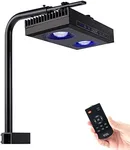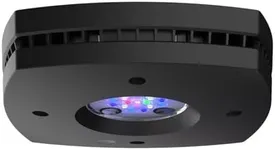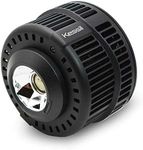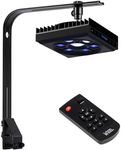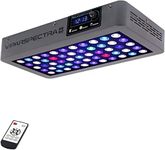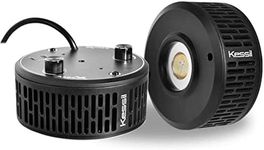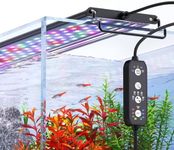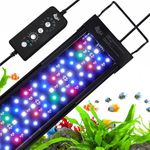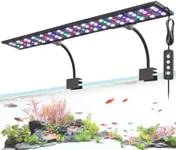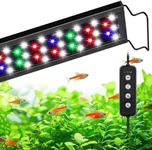Buying Guide for the Best Aquarium Lights For Coral
Choosing the right aquarium lights for coral is crucial for maintaining a healthy and vibrant reef tank. Coral relies on light for photosynthesis, which is essential for their growth and coloration. When selecting aquarium lights, it's important to consider several key specifications to ensure your coral thrives. Understanding these specifications will help you make an informed decision that suits your specific needs and the requirements of your coral.Light SpectrumThe light spectrum refers to the range of wavelengths emitted by the light source. This is important because different corals require different spectrums for optimal growth and coloration. Generally, a full spectrum light that includes both blue and white wavelengths is ideal for most corals. Blue light promotes photosynthesis and enhances the vibrant colors of the coral, while white light provides a balanced spectrum that supports overall health. When choosing a light spectrum, consider the types of coral you have and their specific needs.
PAR (Photosynthetically Active Radiation)PAR measures the amount of light available for photosynthesis, which is crucial for coral growth. Higher PAR values indicate more light energy available for coral to convert into food. PAR values can range from low to high, with low PAR suitable for soft corals and higher PAR necessary for hard corals and SPS (Small Polyp Stony) corals. To pick the right PAR value, assess the types of coral in your tank and their light requirements. Soft corals generally need lower PAR, while SPS corals need higher PAR for optimal growth.
IntensityLight intensity refers to the brightness of the light. This is important because corals need a certain level of intensity to thrive. Intensity can be measured in lumens or watts, and higher intensity lights are typically required for deeper tanks or tanks with high-light-demanding corals. When choosing the right intensity, consider the depth of your tank and the types of coral you have. Shallow tanks with soft corals may require lower intensity, while deeper tanks with SPS corals will need higher intensity lights.
CoverageCoverage refers to the area that the light can effectively illuminate. This is important to ensure that all parts of your tank receive adequate light. Coverage is often determined by the size and design of the light fixture. When selecting a light, consider the dimensions of your tank and ensure the light can cover the entire area without leaving dark spots. For larger tanks, you may need multiple light fixtures to achieve proper coverage.
AdjustabilityAdjustability refers to the ability to control the light settings, such as intensity, spectrum, and timing. This is important for creating a customized lighting environment that suits the needs of your coral. Adjustable lights allow you to mimic natural daylight cycles and adjust the light spectrum and intensity based on the specific requirements of your coral. When choosing a light, look for features like dimming, programmable timers, and spectrum control to provide the best environment for your coral.
Heat OutputHeat output refers to the amount of heat generated by the light fixture. Excessive heat can raise the water temperature and stress the coral, potentially leading to health issues. LED lights are generally preferred for their low heat output compared to other types of lights. When selecting a light, consider the heat output and ensure it won't significantly affect your tank's temperature. If necessary, use cooling fans or other methods to manage heat.

